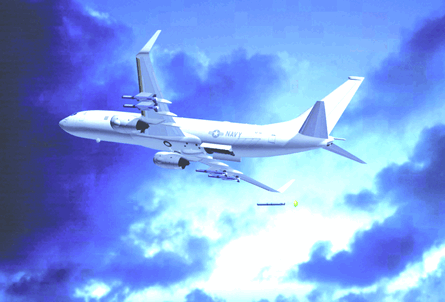Taking an "off-the-shelf" aircraft and adapting it for a new military role was supposed to be the cheap and easy alternative to designing an all-new platform.
So, in accord with the mantra "faster, better and cheaper", US military services since 2001 have often turned to off-the-shelf derivatives of commercial and military aircraft to satisfy new and emerging requirements for a wide range of missions, including scout and utility helicopters, VIP transports, surveillance aircraft and aerial tankers, to name but a few.
The results, however, have proved disappointing. Far from removing cost and schedule risks, procurements based on off-the-shelf aircraft and similar equipment have led to some of the most expensive acquisition fiascos for the US military over the last decade.
Examples range from aborted efforts, such as the ERJ-145-based aerial common sensor (ACS) or the 767-400ER-based E-10A, to multi-billion dollar development fiascos, as endured by the EH101-based VH-71A presidential helicopter and the Bell 407-based ARH-71A armed reconnaissance helicopter.
Track Record
Despite the dubious track record, off-the-shelf alternatives remain popular. A pending contract for an unmanned maritime surveillance aircraft, as well future procurements for new signals intelligence fleets, are all expected to rely on platforms originally designed to perform a different role.
Jacques Gansler, a former US undersecretary of defense for acquisition, technology and logistics (ATL), has been recruited to help solve the Department of Defense's problem.
"A lot of the older systems also had the same characteristics" as today's off-the-shelf aircraft programmes, Gansler says, adding: "We've just got a collection now of bad stories."
Current ATL chief John Young has tapped Gansler to chair a task force aimed at evaluating the reasons why acquisition programmes based on off-the-shelf equipment often fail or face costly delays.
The task force will focus exclusively on the experience of commercial off-the-shelf aircraft adapted for military use, and most in particular the VH-71A and the ARH-70A.
The development phase of Bell Helicopter's ARH-70A has been delayed by at least year, final assembly of the airframe has been relocated from Canada to the USA and first production deliveries to the US Army have been delayed until 2009.
As unit costs jumped from about $9.7 million per aircraft to $12.5 million per aircraft, Bell has been forced to write off a $73 million charge to cover losses on the first two lots of 62 aircraft.
Meanwhile, development costs for the new US presidential helicopter, the VH-71A, have risen by more than 40% to $2.4 billion. The problems apparently stemmed from a miscommunication.
While the US Navy's source selection accepted Lockheed Martin's "increment 1" design largely based on AgustaWestland's EH101, the Naval Air Systems Command (NAVAIR) required the contractor to make significant changes after contract award.
The charter for Gansler's task force is to look not outwardly for flaws in off-the-shelf aircraft, but inwardly - to inspect the military's acquisition and certification processes for embedded faults that create pitfalls for anything besides a purpose-built aircraft.
Young's charter for the task force poses the question: "Some DoD certification processes have been described as 'gold standard'. What qualitative benefits have been gained, and are the benefits commensurate with the costs?"
Gansler says that he often hears about the many lives saved by the military's stringent and unique airworthiness standards, which have been the downfall of many acquisition programmes based on commercial products.
"If you take the lesson from when one [item] broke, and you made all of the rest of them not have the same problem, you end up with what you call 'mil-specs'," he says. "Clearly minimising the risk may cost more to satisfy them. [On the other hand] there clearly are some bases for some of them."
The navy had the benefit of hindsight with the VH-71A when it approached the next major commercial derivative programme - Boeing's P-8A Multimission Maritime Aircraft (MMA).
"That's one of the comparisons we're specifically going to be making," Gansler says.
The P-8A is based on the 737-800 airliner, but with a strengthened fuselage, wing and tail, plus system upgrades for more cooling and power. By far, the biggest design change for the P-8A is a new weapons bay integrated in the lower aft fuselage.
 |
|---|
© Boeing |
According to Young's memorandum to Gansler commissioning the task force, the P-8 "has not evidenced the same issues with airworthiness certification as the VH-71 and ARH".
The Gansler task force has been asked to report their findings within the next five months, as any recommendations must be delivered before the Bush Administration leaves office in January 2009.
Source: Flight International























